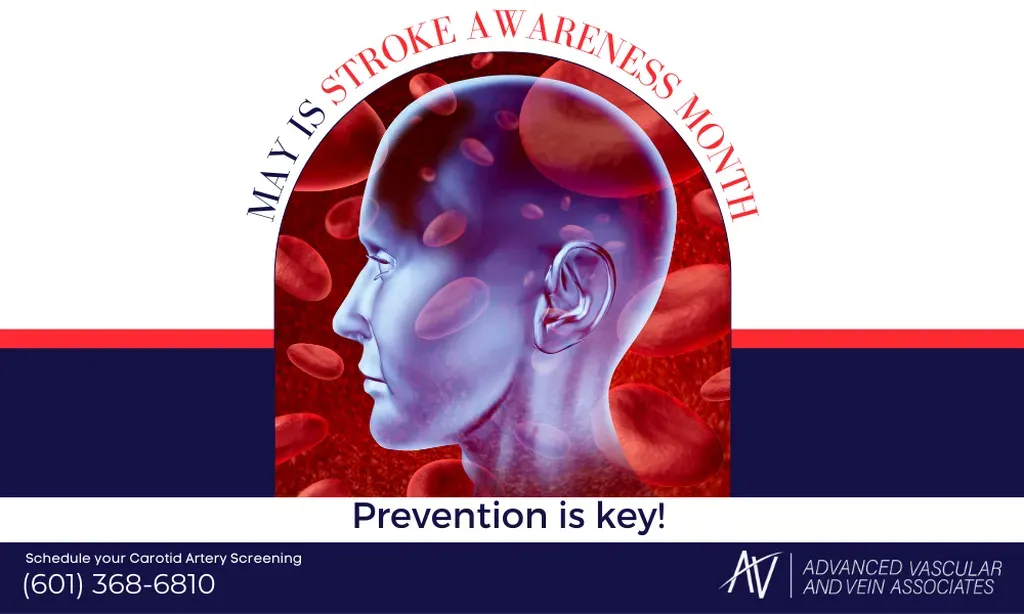May is Stroke Awareness Month

Stroke can be life-threatening and disabling, but it is also highly preventable. Knowing the signs of a stroke and acting quickly can save lives.
Stroke can be life-threatening and disabling, but it is also highly preventable. Knowing the signs of a stroke and acting quickly can save lives. Stroke is the third leading cause of death in the United States. The risk of having a stroke doubles every 10 years after age 55, so it's important to know your risk factors and take steps to lower them.
Strokes are also known as cerebrovascular accidents (CVAs). They occur when blood flow to your brain is interrupted or blocked by a clot or other problem with your arteries that carry oxygen-rich blood through your body. A CVA can lead to serious brain damage if not treated immediately, so knowing how to spot symptoms early on is crucial for getting proper treatment before it's too late!
Symptoms of Stroke
Stroke risk factors include:
- Age - people over 45 years old are more likely to have a stroke than younger adults. However, stroke can occur at any age.
- Diabetes
- High blood pressure
- Smoking
- Birth control pills (oral contraceptives)
- History of TIAs (transient ischemic attacks).
- High red blood cell count
- High cholesterol levels
- Lack of exercise
- Obesity
- Excessive alcohol use
- Illegal drugs
- Abnormal heart rhythm
- Cardiac structural abnormalities
Ways to Lower Your Stroke Risk
- Consult with your physician on how to best establish healthy lifestyle changes including, keeping a healthy weight, and exercising.
- Don’t smoke or quit smoking.
- Limit alcohol.
- Take your medication, especially if you are on medications to lower blood pressure, manage cholesterol and/or diabetes.
- Consult with your physician on how often to check your cholesterol levels.
- Control your blood pressure through medication and lifestyle changes.
- Keep your diabetes in check.
- Work with your healthcare team on an action plan to minimize your stroke risk if you have a cardiovascular condition.
How to Act Quickly if You Notice Signs of a Stroke
If you notice anyone exhibiting the following symptoms, they may be having a stroke. A quick way to remember these symptoms is the anagram F.A.S.T.
- F – Face drooping
- A – Arm weakness
- S – Speech difficulty
- T – Time to call 911
The faster a stroke is identified and treated, the easier it will be for healthcare providers to reverse the effects of stroke.
About 800,000 people have a stroke every year.
Stroke is a medical emergency that requires immediate treatment. An estimated 800,000 people have a stroke each year in the United States, and it's the third leading cause of death. Stroke can also cause long-term disability, which affects more than 5 million Americans.
Fifty percent of strokes are fatal.
Fatal strokes are more common in men than they are in women. Strokes also occur more often in younger people than older ones, and African-American men suffer fatal strokes at a higher rate than white men do.
Stroke is the major cause of adult disability in the United States.
About 5 million Americans currently live with the effects of stroke and about 200,000 people have their first stroke each year. Stroke is also one of three leading causes of death in this country; it kills about 130,000 people annually.
Conclusion
Stroke is a serious condition, but it can be prevented. The best way to prevent stroke is by maintaining a healthy lifestyle and getting regular checkups with your doctor. If you think someone may be having a stroke, call 911 immediately!
